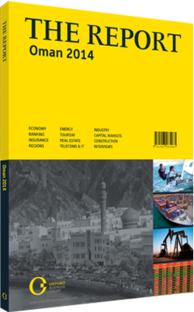Commercial breaks: An historic lack of office space is coming up against rising demand
Oman’s economic revival, and the prospect of a wide range of investments over the coming years, is driving demand in the office property sector. During the economic slowdown from 2009-11, some companies downsized, and much space remains unoccupied. But rents are picking up again for the better properties.
Office Space
Demand is strongest for high-quality office space, of which Muscat has a shortage. Fully furnished units of 100-250 sq metres are particularly popular. Office rentals in key city locations have picked up again in 2013, following a drop after the global financial crisis, but remain below pre-crisis levels. For example, average rents in Al Khuwair rose to OR7 ($18.13) per sq metre per month in 2013, according to Cluttons, up from OR6 ($15.54) in 2011-12 but still down on OR9 ($23.31) in 2009 and OR8 ($20.72) in 2010. Similarly, offices in Azaiba and Ghubrah were renting for OR8 (20.72) per sq metre by mid-2013, dropping from OR10 ($25.90) in 2009 to OR9 ($23.31) in 2010 and OR7 ($18.13) in 2011-12. In Shatti Al Qurum, rents fell by a third between 2009 and 2012, from OR12 ($31.08) to OR8 ($20.72), but picked up to OR9 ($23.31) in 2013. Properties from 80 to 150 sq metres have performed very well, and according to Savills, some command all-inclusive rents of OR10 ($25.90) per sq metre. With several prime office space projects expected to be launched to meet demand, rental growth is likely to be moderate at best, particularly given the market’s limitations.
Meeting The Market
While there is demand for quality, well-located units, developers that have built office blocks without adequate planning in unsuitable locations or without supporting infrastructure have had trouble renting these properties. Savills estimates that 45% of office space completed between the last quarter of 2011 and the first quarter of 2013 remained vacant at the end of that period. Space in the Ghala Industrial Area has proved especially hard to fill. It is likely that much of this space does not appeal to companies that are expanding and relocating. “The main criteria that clients are looking for are size, location and finishing,” Matthew Wright, head of logistics and industrial at Cluttons Oman, told OBG. “Quality is still somewhat subjective, and the concept of shell and core is not yet that familiar to this market.”
One issue is a shortage of parking space. A two-tier market has divided units with adequate parking and those without. The Muscat Municipality has implemented a policy mandating a minimum of one parking space per 35 sq metres of office space for new buildings, according to Benjamin Cullum, general manager at Hampton’s International in Oman. Cullum told OBG that at present the ratio can range as high as one space per 274 sq metres – but the standard office configuration is approximately one desk per 17 sq metres of space. Given that most workers drive, current availability is inadequate. “Suitable parking ratios in office buildings continue to be a key issue,” Philip Paul, head of country at Cluttons Oman, told OBG. “Landlords need a reliable, long-term solution because using adjacent vacant plots is not a sustainable option.”
Moving West
Muscat’s historic lack of office space and a degree of oversupply in older residential units has led to many residential properties being taken over for commercial use. For some time, the municipality has been especially keen to reduce the number of residential units being used as offices and redeploy them as homes. Savills reports that municipality licences for new commercial tenants have become scarcer, although existing leases have continued. This is likely to support demand for purpose-built office space in the medium term and stimulate the shift of commercial clients towards other new areas, particularly in the west of the city. Notably, Bank Muscat’s move from Ruwi to Airport Heights in 2010 has been followed by two more major financial institutions, and Cullum expects the trend of moving westwards to continue, particularly with the completion of the expressway and upgrades to the Batinah Highway. The Oman Convention and Exhibition Centre, scheduled for completion in 2016, should further catalyse the area’s economic development.
You have reached the limit of premium articles you can view for free.
Choose from the options below to purchase print or digital editions of our Reports. You can also purchase a website subscription giving you unlimited access to all of our Reports online for 12 months.
If you have already purchased this Report or have a website subscription, please login to continue.

